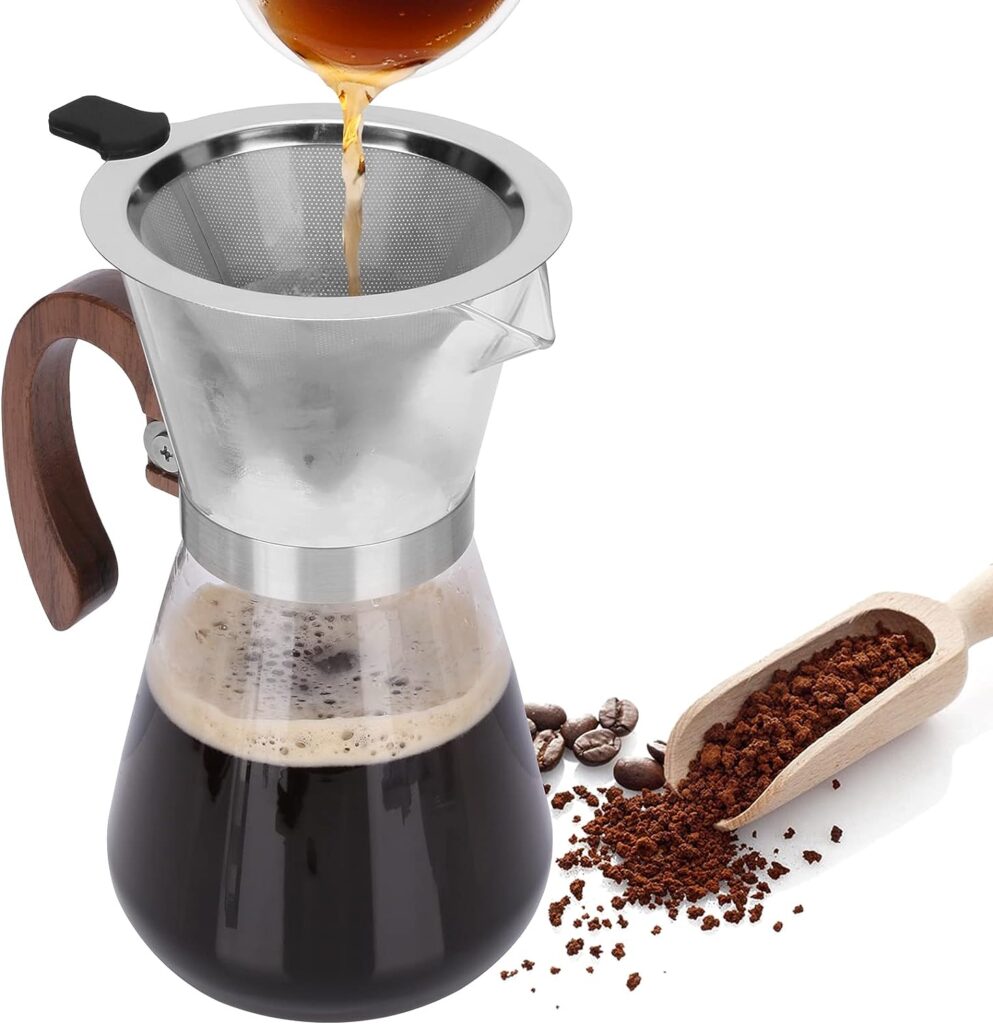
If you are a coffee lover, you might have heard the term “third wave coffee” being used by some baristas, roasters, or enthusiasts. But what does it mean, and how is it different from other types of coffee? In this article, we will explain the history, characteristics, and benefits of third wave coffee, and why you should give it a try.
What is Third Wave Coffee?
Third wave coffee is a movement in coffee culture that emphasizes high quality, transparency, and sustainability in every aspect of the coffee production and consumption. It is not a specific type of coffee, but rather an approach that values the origin, variety, processing, roasting, brewing, and serving of coffee. Third wave coffee aims to highlight the unique flavors and aromas of each coffee bean, and to respect the people and the environment involved in the coffee chain.
The term “third wave coffee” was coined in 1999 by Timothy Castle, a coffee writer and consultant, who used it to describe the emerging trend of specialty coffee in the US. However, the origins of the movement can be traced back to the 1970s, when pioneers like Alfred Peet and George Howell started to source and roast high-quality Arabica beans from different regions of the world. They also introduced lighter roast profiles and alternative brew methods that enhanced the natural characteristics of the beans.
The third wave coffee movement gained momentum in the 2000s, with the emergence of roasters and cafes that focused on single-origin coffees, direct trade relationships with farmers, traceability and transparency of the supply chain, social and environmental responsibility, education and training of consumers and professionals, innovation and experimentation with roasting and brewing techniques, and presentation and storytelling of each coffee. Some of the most influential third wave roasters and cafes include Intelligentsia Coffee, Stumptown Coffee Roasters, Blue Bottle Coffee, Counter Culture Coffee, La Colombe Coffee Roasters, Verve Coffee Roasters, Ritual Coffee Roasters, and many others.
The third wave coffee movement is not limited to the US, but has spread to other countries and regions, such as Canada, Europe, Australia, Japan, South Korea, Taiwan, and Latin America. Each of these places has developed its own style and culture of third wave coffee, influenced by the local preferences, traditions, and innovations.
How is Third Wave Coffee Different from First and Second Wave Coffee?
To understand what makes third wave coffee different, it is helpful to compare it with the previous two waves of coffee that shaped the history and evolution of the beverage.
The first wave of coffee refers to the mass production and consumption of coffee that started in the late 19th and early 20th century. It was driven by the industrialization and commercialization of coffee, which made it accessible and affordable to the general public. The first wave of coffee was characterized by low-quality Robusta beans, dark roasts, canned or instant coffee, and additives like sugar and cream. The first wave of coffee focused on convenience and consistency, rather than quality and flavor. Some of the most representative brands of the first wave of coffee include Folgers, Maxwell House, Nescafé, and Sanka.
The second wave of coffee refers to the rise of specialty coffee and espresso-based drinks that started in the 1960s and 1970s. It was driven by the introduction and popularization of Italian-style coffee shops that offered a variety of beverages, such as cappuccino, latte, mocha, and macchiato. The second wave of coffee was characterized by higher-quality Arabica beans, medium roasts, espresso machines, and flavored syrups. The second wave of coffee focused on customization and experience, rather than origin and variety. Some of the most representative brands of the second wave of coffee include Starbucks, Peet’s Coffee & Tea, Caribou Coffee, and Dunkin’ Donuts.
The third wave of coffee refers to the current movement of artisanal coffee that started in the 2000s and continues until now. It is driven by the appreciation and exploration of the diversity and complexity of coffee. The third wave of coffee is characterized by single-origin coffees, light roasts, manual brew methods, and minimal additives. The third wave of coffee focuses on quality and flavor, rather than convenience and consistency. Some of the most representative brands of the third wave of coffee include the ones mentioned above, as well as many independent roasters and cafes.
What are the Benefits of Third Wave Coffee?
Third wave coffee offers many benefits for both the consumers and the producers of coffee. Here are some of them:
- Third wave coffee provides a richer and more diverse sensory experience for the consumers, who can enjoy the different flavors and aromas of each coffee, depending on its origin, variety, processing, roasting, and brewing. Third wave coffee also encourages the consumers to learn more about the history, culture, and stories behind each cup of coffee, and to appreciate the craftsmanship and passion of the people involved in the coffee industry.
- Third wave coffee promotes a more ethical and sustainable way of producing and consuming coffee, which benefits the environment and the society. Third wave coffee supports the practices of organic farming, shade-grown cultivation, natural or honey processing, carbon-neutral roasting, reusable packaging, and compostable cups. Third wave coffee also fosters the direct trade relationships between the roasters and the farmers, which ensures fair prices, better working conditions, and more transparency for the producers.
- Third wave coffee stimulates a more innovative and creative culture of coffee, which leads to new discoveries and improvements in the field. Third wave coffee encourages the experimentation with new varieties, hybrids, fermentation methods, roast profiles, brew recipes, and presentation styles. Third wave coffee also inspires the collaboration and exchange of ideas among the coffee professionals and enthusiasts, who share their knowledge and feedback through events, competitions, publications, and social media.
How to Choose and Enjoy Third Wave Coffee?
If you are interested in trying third wave coffee, here are some tips on how to choose and enjoy it:
Look for roasters and cafes that offer single-origin coffees or blends that specify the origin, variety, processing, and roast date of the beans. Avoid coffees that are too old, too dark, or too generic.
Ask for recommendations from the baristas or the roasters, who can guide you to find the best coffee for your taste and preference. You can also read the reviews and ratings of other customers or experts, who can give you some insights and suggestions.
Experiment with different coffees from different regions, varieties, and roasts, and compare their flavors and aromas. You can also try different brew methods, such as pour-over, French press, AeroPress, siphon, or cold brew, and see how they affect the extraction and taste of the coffee.
Enjoy your coffee without adding too much sugar, milk, or cream, which can mask or alter the natural flavors of the coffee. If you prefer some sweetness or creaminess, use a small amount of high-quality ingredients, such as raw sugar, honey, maple syrup, oat milk, almond milk, or soy milk.
Pay attention to the details and nuances of your coffee, such as the color, texture, aroma, acidity, sweetness, bitterness, body, and aftertaste. Try to identify the specific notes and characteristics of your coffee, such as fruity, floral, nutty, spicy, chocolatey, earthy, etc.
Share your coffee experience with others, who can also appreciate and enjoy third wave coffee. You can also join online or offline communities of coffee lovers, where you can exchange opinions and information about third wave coffee.
Conclusion
Third wave coffee is a movement that celebrates the diversity and quality of coffee. It is not just a type of coffee, but a way of life that values the origin, variety, processing, roasting, brewing, and serving of coffee. Third wave coffee offers many benefits for the consumers and the producers of coffee, such as a richer sensory experience, a more ethical and sustainable practice, and a more innovative and creative culture. Third wave coffee also invites the consumers to learn more about the history, culture, and stories behind each cup of coffee, and to appreciate the craftsmanship and passion of the people involved in the coffee industry.
If you want to try third wave coffee, you can look for roasters and cafes that offer single-origin coffees or blends that specify the details of the beans. You can also ask for recommendations from the baristas or the roasters, who can help you find the best coffee for your taste and preference. You can experiment with different coffees from different regions, varieties, and roasts, and compare their flavors and aromas. You can also try different brew methods, such as pour-over, French press, AeroPress, siphon, or cold brew, and see how they affect the extraction and taste of the coffee. You can enjoy your coffee without adding too much sugar, milk, or cream, which can mask or alter the natural flavors of the coffee. You can pay attention to the details and nuances of your coffee, such as the color, texture, aroma, acidity, sweetness, bitterness, body, and aftertaste. You can try to identify the specific notes and characteristics of your coffee, such as fruity, floral, nutty, spicy, chocolatey, earthy, etc. You can share your coffee experience with others, who can also appreciate and enjoy third wave coffee. You can also join online or offline communities of coffee lovers, where you can exchange opinions and information about third wave coffee.
We hope this article has given you a clear and comprehensive overview of what is third wave coffee and why you should care. If you have any questions or comments about third wave coffee
Some of the devices that you can use to make third wave coffee are:
Which device do you like the most?
